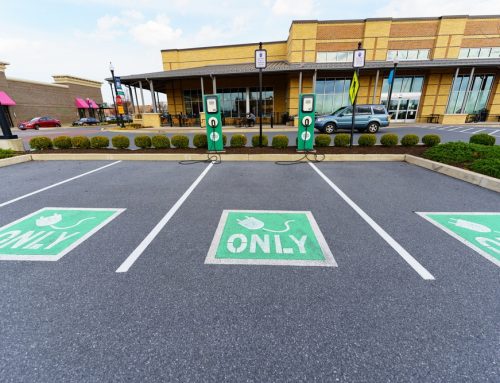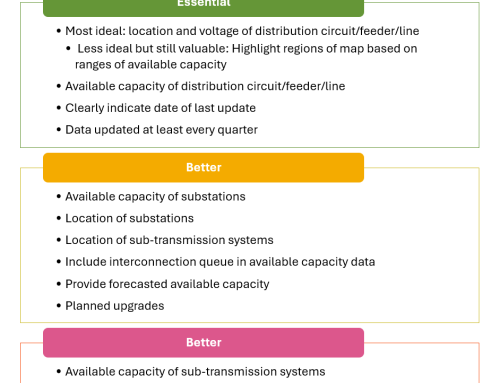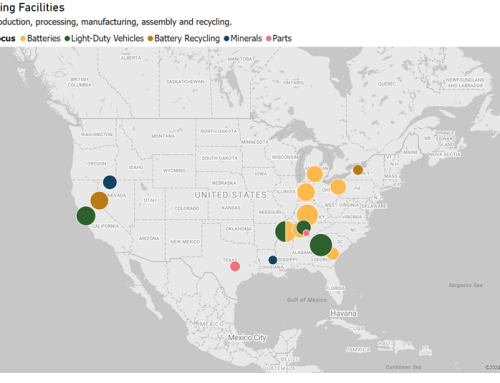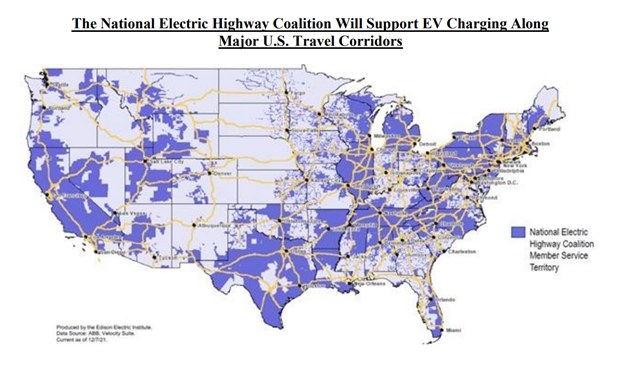
Source: National Electric Highway Coalition.
Electric utility companies last week announced the formation of the National Electric Highway Coalition (NEHC). This Coalition, as seen in the map above, combines the existing Electric Highway Coalition and the Midwest Electric Vehicle Charging Infrastructure Collaboration and adds new members. The NEHC now spans much of the country and includes more than 50 investor-owned utilities (IOUs), one cooperative and the Tennessee Valley Authority.
The Coalition plans to site public DC fast chargers along the highways in the map to “allow the public to drive EVs with confidence along major U.S. travel corridors by the end of 2023”. This is very exciting and could ensure much better access to fast charging for drivers across the country! Let’s take a dive into what this might look like.
First, how much more activity does this represent compared to what utilities are currently doing? To start, let’s compare the map of NEHC above to our map of states with investor-owned utility EV programs below. Are there any states that have some purple in the map above but do not have any circles in the map below? Looks like yes. There is a notable gap in southeast states like Arkansas, Louisiana, Mississippi, Alabama, and Tennessee representing states with utilities that signed on to the coalition but have yet to propose investments in transportation electrification. We will be keeping our eyes open for proposed utility investments in those states from IOUs as well as TVA, which provides electricity in several of these states and is a member for the NEHC. 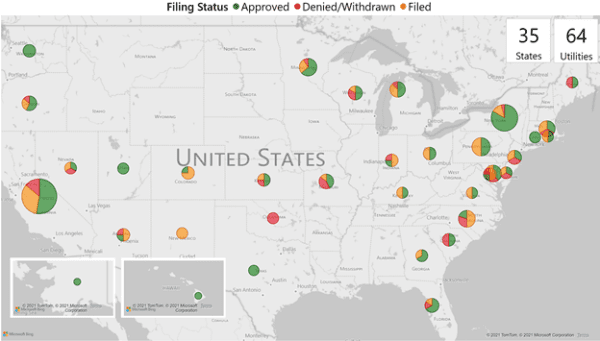
Utility EV programs across the country. Green means approved, orange means pending, and red means withdrawn/rejected. The size of the bubble corresponds to the number of programs in each state. Source: EV Hub.
For the most part however, the utilities that have joined the NEHC are already taking some actions in supporting transportation electrification. In fact, 64 participating IOUs across 35 states have already proposed or been approved to invest in transportation electrification.
Next question: for utilities that already have EV programs, will these programs be enough to meet the goals of the NEHC or should we expect to see new utility programs? The Edison Electric Institute (EEI), which supported the creation of the NEHC, anticipates a need for 100,000 DC fast chargers by 2030 to support the rapid uptake of EVs across the country.
To date, approved utility programs will only support about 6,800 DC fast chargers. Of course, not all 100,000 DC fast chargers will come from utilities. Major fast charging networks like Electrify America, EVGo, and Tesla will continue to grow and provide fast charging along many of the corridors included in the NEHC. But still, to date, these networks provide a total of only 21,000 DC fast charging ports, so there is a long way to go to reach EEI’s projected need for 100,000 chargers and it seems fair to expect many IOUs to ramp up their level of investment.
This leads to some other questions. For example, how will the NEHC members coordinate with these other networks to identify charging gaps? How will the member utilities coordinate with each other to generate lessons learned and best practices to ensure a reliable charging network and a positive driver experience across service territories?
Range anxiety and the risk that a driver will run out of fuel looms large for some, particularly new or prospective EV drivers. This investment provides an opportunity to cover some of the main highways in the country and so will provide more confidence for EV drivers. This initiative should complement the Biden Administration’s $5 billion included in the Infrastructure Investment and Jobs Act to support the National Electric Vehicle Formula Program.
The role of utilities in supporting charging infrastructure varies considerably – from make ready infrastructure to rebates. The Edison Electric Institute (EEI) has indicated that utilities are willing to be versatile in their role in the deployment of charging. EEI anticipates that there will be 22 million EVs on the road by 2030 – for reference, there are now just over 2.2 million EVs sold across the country.
The next few years will see a significant demand spike for public charging and utilities appear hungry to lead the charge.
